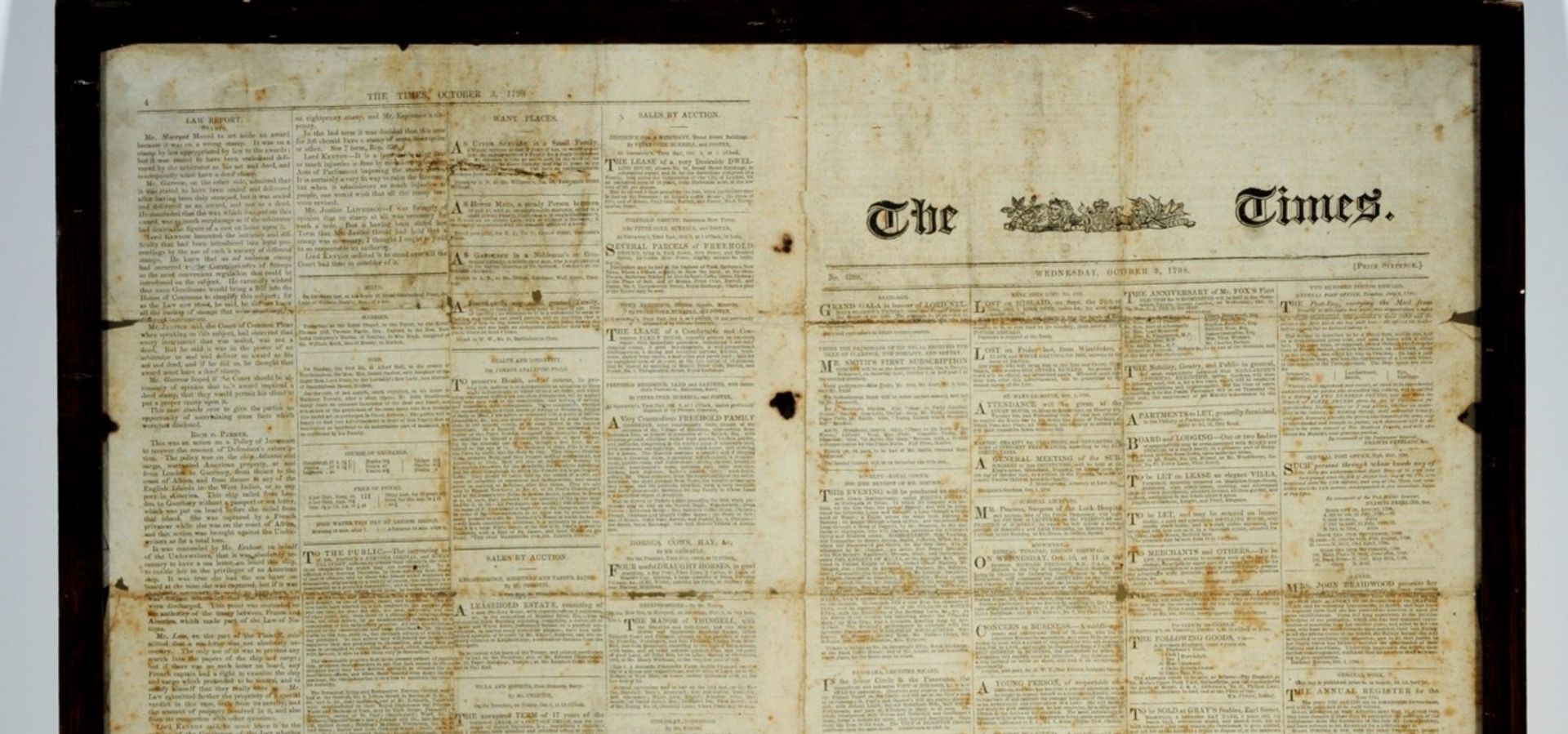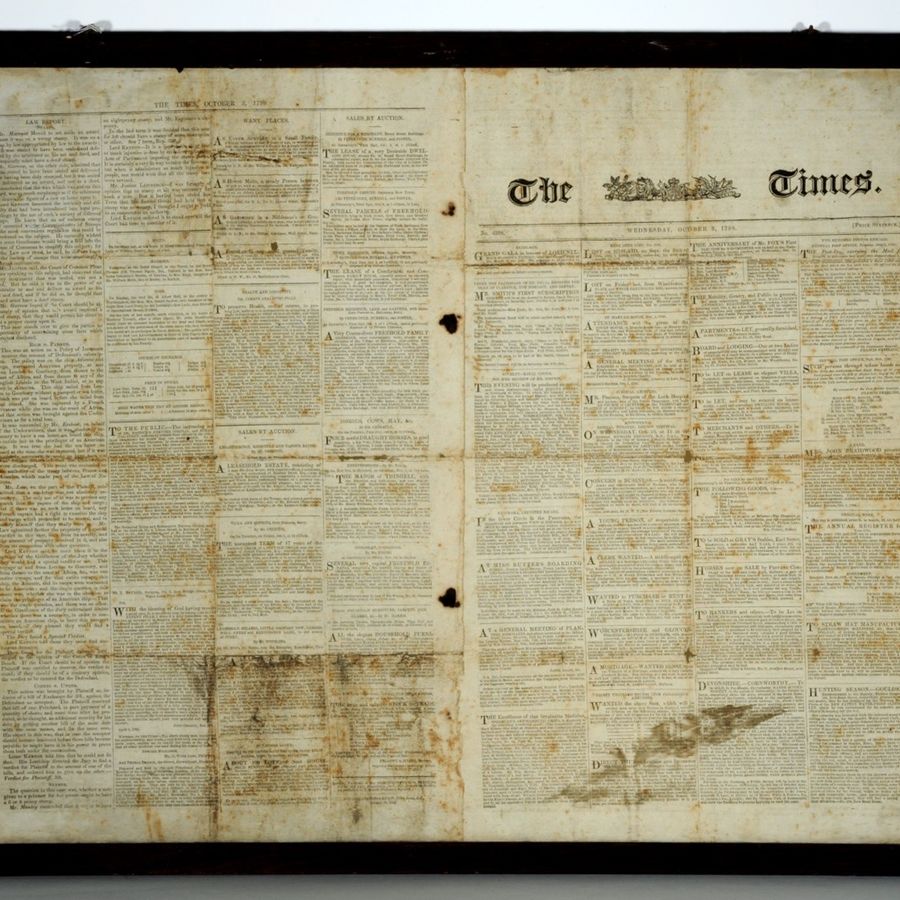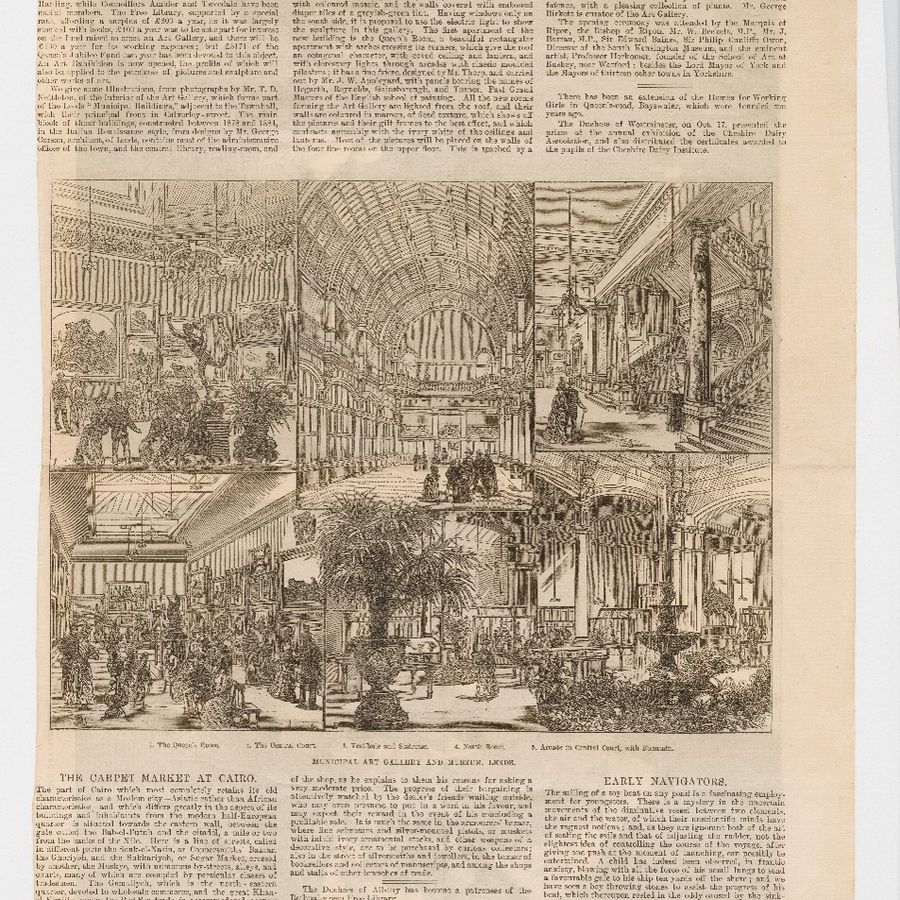
News from the past: October
In this series created by our volunteer Mel Kerry, they look back on the past with this feature of newspapers, clippings and other ephemera from the Leeds Museums and Galleries collection and explore what news looked like in our city’s past. October’s edition features Bonaparte galleys, the Leeds Fine Art Gallery and wartime smart calories.
Admiral Nelson’s Victory

The French Revolution in the late 1700s (in which the people of France overthrew the king) resulted in many conflicts between France and other countries, including Britain. Many of these battles took place in the Mediterranean Sea, as France attempted to invade Egypt and Syria to establish French colonial influence in Egypt and interrupt Britain’s access to India’s colonised wealth and resources.
Three months of conflict in the Mediterranean Sea came to a climax in August of 1798 after Britain’s long pursuit of the French fleet. The British fleet, led by Admiral Nelson, surprised the unprepared French fleet anchored in Abu Qir Bay, Egypt. Nelson was wounded in action, but he led his fleet to a great victory, destroying many of the French ships and trapping the French army in Egypt.
The official news reached the British government in the following October and was reported in the next day’s newspaper. This October 3rd, 1978 edition of The Times features a front-page headline announcing a “grand gala” in honour of Lord Nelson’s victory and includes more details of the battle on another page. The pages regarding the battle have been framed in non-conservation-grade glass and were likely framed before they were donated to Leeds Museums and Galleries in 1963.
The Leeds Fine Art Gallery

The Leeds Art Gallery was formally opened by Mayor Alderman Scarr on October 3rd, 1888, as an addition to Leeds’ “flourishing public institutions.” This article from the Illustrated London newspaper features six illustrations of the art gallery as it was when it first opened, attended by visitors in fine dress and hats observing the sculptures, paintings and a Burmantofts fountain.
Several of the works of art depicted here are still on display in the gallery a hundred years later. Retribution by Edward Armitage, featuring Britannia’s defeat of a Bengal tiger representing India, was originally painted in 1858 for the Leeds Town Hall. It was transferred to the Leeds Art Gallery for its opening in 1888, where it is shown here in the illustration of the Queen’s Hall (now the Ziff Gallery), and it remains there today.
The painting reflects a narrative of British colonial power during the Indian Rebellion of 1857. When the Indians rebelled against British exploitation, they were depicted as a wild and aggressive tiger attacking women and children. The effects of European global conquest at the time are also present in the newspaper itself, which describes an Egyptian market in a part of Cairo to differ greatly from the “modern half-European quarter” of the city.
Rationing Period – Food Facts

During World War II (1939-1945), the people on the home front couldn’t take the simple things for granted. While the British soldiers were fighting the Axis Powers abroad, the German Nazis used submarines and aircraft to attack the merchant ships that delivered food and supplies to the people of Britain. One of the ways that the British government dealt with the lack of supplies was by rationing – limiting the amount of food each individual person was allowed with ration books and coupons.
In addition to rationing, the government led several campaigns to encourage the self-sufficiency and resourcefulness of the people of Britain. Make Do and Mend’s mismatched mascots encouraged the repair of old clothes, and the Ministry of Agriculture made “Dig for Victory” leaflet guides on how to “grow your own” food in your garden or allotment.
This war-time newspaper cutting from October 1944 features three recipes using ingredients available during the rationing periods, such as rationed meat and homegrown vegetables. The “quick and easy” recipes all contain the necessary protein to be satisfying, even when made in a hurry. The article also recommends dried eggs as an alternative to fresh shell eggs with “exactly the same nutritional value” – dried eggs were easier to store and kept fresh for longer in the rationing periods.
By Mel Kerry
